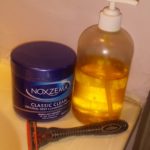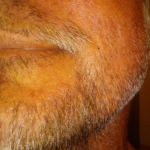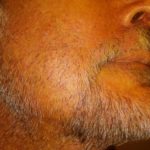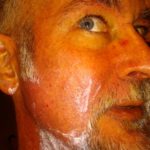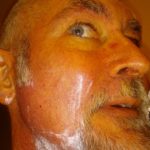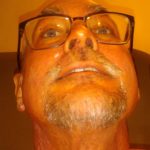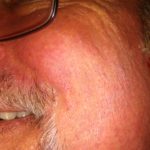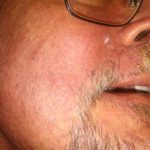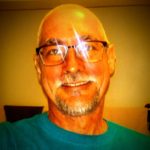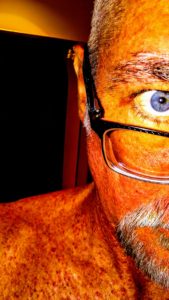 I was told twice in one day this week that I looked “bright.” I was smiling and active, keeping myself busy and directed, and I was surrounded by people who I had not seen in several months (along with a few I had never seen at all). It was the good nature of reconnecting in a friendly crowd without the threat of being lost in it, I imagine, that sparked my particularly good mood on that occasion. The description was used again on subsequent days by unrelated people, causing me to take note that, perhaps, the whites of my eyes have simply become whiter. (Insert your own Revolutionary War joke here.)
I was told twice in one day this week that I looked “bright.” I was smiling and active, keeping myself busy and directed, and I was surrounded by people who I had not seen in several months (along with a few I had never seen at all). It was the good nature of reconnecting in a friendly crowd without the threat of being lost in it, I imagine, that sparked my particularly good mood on that occasion. The description was used again on subsequent days by unrelated people, causing me to take note that, perhaps, the whites of my eyes have simply become whiter. (Insert your own Revolutionary War joke here.)
For those who may have missed this small detail in the meandering story of my life, I work part-time as a barista at my daughter’s school. It has been a fine, welcoming community for me in the years since my cancer diagnosis, and this steady bit of structure has helped me immensely as I have gone through my various treatments. The incidents mentioned above took place at the school, during back to school events, and for much of the time I was high up in the converted trailer that we use as our coffee “cart.” It is a nicely renovated camper and, for me, both an occasional oasis and office away from home, as well as something of a social hub.
On busy mornings, which last roughly an hour, it often takes about all I can put forth for the day. At least on my feet — I try to reserve the mental energy to write when I return home, but that does not always happen. Asked today how my stamina has been, I admitted that it was improving on my current treatment, but that it still was highly relative to whatever was going on. Up in my perch, however, I generally have the advantage of looking generally impressive by virtue of height and separation by counter space. And I have the advantage as well of my morning energy burst. These things matter in how I am perceived, a fact continually reinforced when people there learn for the first time about my lung cancer treatment, and moreover when people who have been drinking my coffee for years get caught up on how I am actually doing. Which brings me back to looking so bright.
In one of those coincidences of timing, my recent dose reduction in poziotinib happened just before the first week of school. It happened, in fact, just in time for my body to begin clearing up a good amount of the acneiform rash that covered my face and scalp. Not much change occurred below the neck, and in many ways, my hands continued to take more of a beating, but those aspects would remain largely hidden under sleeves and gloves. My face, though; my face looked clear. Thanks to a spontaneous decision to wash my entire head with Noxzema, even to shave with a thick layer of the stuff, and then douse my skin in a luxurious coating of a mysterious oil blend I keep handy, I am pretty sure I downright glowed for a good 48 hours straight.
 But a week later, I am wondering if the experience was something of a fluke. My skin has begun breaking out like crazy, especially along the jawline and neck and intensely within the small remaining patch of beard I retained on my chin. My scalp, which had done exceptionally well this past week even as I reduced the steroid cream that paved the way for comfortable nights on my pillow, has suddenly grown more sensitive. It is covered with a whole new range of lumps that would drive a phrenologist crackers, even if they are not erupting into obvious blemishes.
But a week later, I am wondering if the experience was something of a fluke. My skin has begun breaking out like crazy, especially along the jawline and neck and intensely within the small remaining patch of beard I retained on my chin. My scalp, which had done exceptionally well this past week even as I reduced the steroid cream that paved the way for comfortable nights on my pillow, has suddenly grown more sensitive. It is covered with a whole new range of lumps that would drive a phrenologist crackers, even if they are not erupting into obvious blemishes.
The experience has me wondering what the next phase will be for my skin. The rash has proven to be both consistent and unpredictable over the past few months. While my larger concern is the effect poziotinib is having where I cannot see the results with my eyes, it is difficult day to day not to be a little obsessed over what is going on where I can see. I also find myself obsessing just a little bit over what other people can see and how it might affect them. This is not just about strangers or clients or even friends, but also about those closest to me and who have no means of obvious escape from what they see.
I bleed a lot, for instance, and that can freak people out, even those who see it all the time. It is more than an inconvenience to me, too, since I tend to notice it after I have already potentially ruined a new set of sheets or smeared the wall. Even taking to wearing nitrile gloves as much as I do (and some activities, like writing, would be virtually impossible much of the time without them), I still manage to leave traces of myself where I had not planned. My friends have joked a lot about how easy the gloves would make it for me to go about doing crimes, but they do not realize the trove of DNA that I am constantly still leaving behind.
I focus a lot on the exterior side-effects, but there is one prominent issue that is invisible and not easily attributable. Throughout this process, I have been plagued by increasing night cramps in my legs and feet. These are cramps that were screamingly painful, twisting, long-lasting, and unlike anything I had felt. They were nothing like the charlie horses I have occasionally gotten since childhood or the restless leg syndrome that has been an on-again, off-again annoyance over the last decade or two.
To control the cramps, which were diagnosed as simply severe but somewhat common night cramps, I was put on the drug Ropinirole. The drug decreased the pain, but soon the cramps started back up and became more frequent. Then I began the drug Baclofen, which initially seemed to work and then didn’t. The two drugs together seemed promising, and then they weren’t. Now I am going to begin Carisoprodol, but my options may be narrowing quickly. I am hoping that this new one is effective and stays effective because I have noticed two important shifts in the cramping over the past couple weeks: one, it has begun happening during the day, not just when I am sleeping, and two, it has also affected by arms and hands.
While the medication has made the pain tolerable and seems to keep the instances comparatively brief, this is all part of a process of adaption. Getting through each phase is a teaching moment of sorts. Sure, we are generating good data for the clinical trial, but I am also being given important data about my own body and how it responds. I am also learning quite a bit about physical resilience and emotional tolerance, and possibly where my own limits lie.
For now, still weeks away from my next scan, I remain in a holding pattern to discover whether my body will adjust to the lower dose of medication with a correspondingly lower impact from the rash, and also whether the lower dose of medication will continue to provide a sufficient medical response against my cancer. I am optimistic on both fronts, but wait and see is still wait and see. So each morning I look in the mirror, qualifying the clarity of my skin. It’s my crutch, I suppose. Do I spread moisturizer or gently cleanse or dare I step into the shower? I prod at my flesh, examining each square inch that I can focus on, photographing what I can’t see with always unsatisfying results. What exactly is my medication doing?
What exactly is my medication doing?
I hope that my body figures it out. And I look forward to getting the actual medical spin on this question. The answers cannot come too soon.
If this post resonates with you, please consider supporting my work through a monthly subscription to my feed on Patreon, or a one-time donation through PayPal. Follow me on Twitter, Facebook, Tumbler and many other fancy social sites or apps. Please share my posts to groups you are involved with on Reddit or Google+ or anywhere else that you feel it will help or enlighten or inspire another reader. (Sharing buttons are below the post!)
